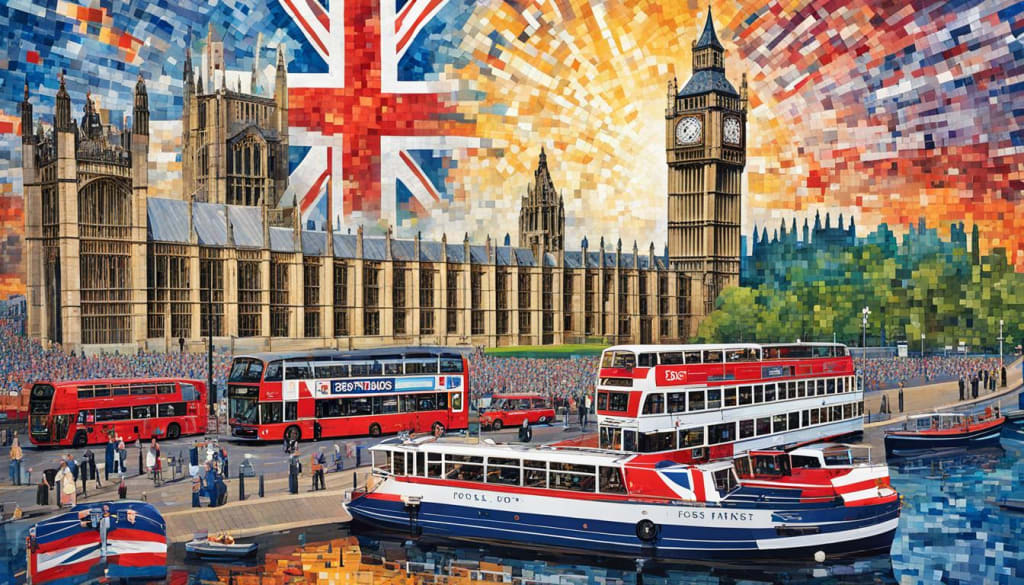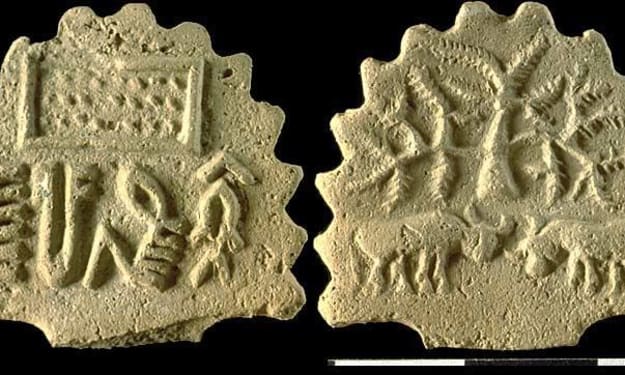Uncover the Fascinating History of the United Kingdom
History of the United Kingdom

The history of the United Kingdom is a story that's both interesting and long. It goes from its Celtic beginnings to today. This piece shows the major events, people, and cultural changes in the UK's history. We'll learn about the British past. This includes the Roman times, Tudor Renaissance, and the Industrial Revolution. The UK's history shows how it has been strong, inventive, and influential worldwide.
Explore the Ancient Roots of Britain
The United Kingdom's story starts with the Celtic tribes in the British Isles. These people had a strong culture, language, and beliefs. Then, the Roman Empire took over in the 1st century AD. The Romans brought new technology and systems to Roman Britain.
Celtic Origins and Roman Conquest
People first arrived in prehistoric England around 900,000 years ago. Celtic tribes lived there and had their own culture. However, the Roman Empire changed everything when they conquered Britain. This was around AD 43 and Roman rule lasted for almost 400 years.
The Arrival of Anglo-Saxons and Vikings
When Roman rule ended, the Anglo-Saxons and Vikings arrived. From the 5th to the 11th centuries, these new settlers shaped the area's culture and politics. They created the first kingdoms of England and Scotland. The Viking invasions, like the one in Lindisfarne in 793AD, changed Britain's social and language landscape.
The Norman Invasion and the Plantagenet Dynasty
The year 1066 saw the Norman Conquest reshape British history. William the Conqueror and his troops took the English throne, changing the country’s path. Their Norman influence led to a stronger monarchy, a feudal system, and the building of famous castles and cathedrals.
The Impact of the Norman Conquest
In 1086, William I made a survey called the strong>Domesday Book. It showed England as a land ruled by feudal ties. At the time of his reign’s end, there were fewer than 180 land grants. He had hundreds of Norman administrative officials under him. They oversaw a system that made knights tenants provide soldiers for the king’s army. This changed the power structure in medieval England, making the English monarchy even stronger.
The Turbulent Reign of the Plantagenets
The Plantagenet dynasty, from the 12th to the 15th centiury was a mix of peace and trouble. Key rulers such as strong>Henry II, Richard the Lionheart, and King John influenced English law and governance. Notable events were Richard I’s crusades and John’s signing of the Magna Carta in 1215. These moments changed the English monarchy and how it interacted with its people.
The Plantagenet dynasty made a lasting impact on medieval England. They laid the foundation for the English monarchy and its bond with the people. Their rule set the stage for the UK’s future.
Tudor Times: A Golden Age for England
The Tudor period, from 1485 to 1603, is seen as a golden age for England. It was a time of big changes in politics, religion, and culture. Henry VIII and the English Reformation made England leave the Roman Catholic Church. This change had a huge impact on the country.
The Reformation and the Break from Rome
The Tudor dynasty and the English Reformation changed England a lot. Henry VIII broke away from the Roman Catholic Church. He made the Church of England with him as the leader. This change in religion had a deep effect on England, preparing it for the Elizabethan era.
Elizabethan Renaissance and Maritime Exploration
The Elizabethan era was from 1558 to 1603, when Queen Elizabeth I was in power. It was a time of great growth in the arts, literature, and sea travel. England became a major global player, with famous people like William Shakespeare, Francis Drake, and Sir Walter Raleigh. They helped create a strong United Kingdom. During the Renaissance England, they explored more and set up colonies abroad.
The Stuart Monarchs and the English Civil War
The 17th century in Britain was full of tough times. It saw the Stuart dynasty rise and fall, plus the English Civil War. James I, Charles I, and Charles II found themselves in power fights with Parliament. These struggles came to a head in the 1640s with the Civil War start.
The war saw Parliamentarians fight Royalists. It ended with Charles I losing his life. Then, Oliver Cromwell took charge of the Commonwealth. But, after a time of trouble, the monarchy was restored.
The English Civil War was crucial. It faced Parliamentarians against the Royalists. With Charles I's death, the Commonwealth began under Oliver Cromwell. Yet, it paved the way for the Restoration of the monarchy.
The Glorious Revolution and the Birth of Constitutional Monarchy
In the late 17th century, a major event shook British history. This was the Glorious Revolution of 1688-89. It ended with William of Orange and Mary II becoming monarchs. They took over from King James II, a Catholic ruler. This important change marked the rise of a constitutional monarchy. It also supported the growth of parliamentary democracy in Britain.
The Establishment of Parliamentary Democracy
The Glorious Revolution changed the power setup between kings and the parliament. In January 1689, the Convention Parliament met. They saw King James II running away as giving up the throne. They then made an offer to William and Mary to rule together.
This led to the Bill of Rights. It made clear that Parliament was more powerful than the monarch. Some of the king's old powers were taken away. With these changes, the nation truly shifted to a parliamentary democracy.
The Rise of the British Empire
During the 18th and 19th centuries, the British Empire grew a lot. Britain spread its influence worldwide. It used trade, colonization, and its strong military. This period also saw a lot of political peace and a powerful parliamentary system in Britain.
All this laid the groundwork for Britain to become a superpower. Its actions changed global history for many years to come.
The Industrial Revolution: Forging a Modern Nation
In the late 18th and 19th centuries, major changes swept through the United Kingdom. The industrial revolution brought new technologies and ways of life. It changed the country's economy, its look, and how people lived together.
Technological Advancements and Social Transformations
New technologies like the steam engine changed how goods were made in Britain. These advances included the factory system and mass production. They made work more efficient and started the move to cities. This helped create a strong working class.
The Emergence of the Working Class
The industrial revolution made big changes in jobs and where people lived. Craftsmen now ran machines in factories, changing their work life. This started a new working class. Their fights and gains would change the country. It led to the growth of working-class movements and bigger social differences.
This era not just changed how Britain looked and worked. It also changed people's lives deeply. These changes laid down the future for the nation. The new confidence from this time would guide the UK for years to come.
History of United Kingdom: A Tale of Empires and Conflicts
The Expansion and Decline of the British Empire
The United Kingdom's story is closely linked to the rise and fall of the British Empire. At its peak, the empire stretched across the world. During the 1800s and early 1900s, the empire grew, gaining control over lands in Africa, Asia, and more. This period, rife with colonial activities, global conflicts, and nationalist movements, greatly influenced the UK's sense of identity and its place in the world.
World Wars and the Struggle for Supremacy
The era of British imperial dominance faced challenges from nationalist movements and social problems, leading up to two World Wars. These wars significantly weakened the empire. The battles during those conflicts left deep marks on the UK's society, politics, and economy. Following the wars, the UK grappled with its reduced global status, marking the start of its modern history.
The United Kingdom in the Modern Era
The UK's history keeps growing in the modern era. It's full of big changes in society, culture, and politics. The 1960s were known as the "Swinging Sixties." This was a time of huge change in Britain. New artists, musicians, and thinkers came forward. They questioned old ways, creating a vibrant culture.
The Swinging Sixties and Cultural Revolution
The 1960s in Britain were a turning point. This era of change was known as the Swinging Sixties. It was a time of big shifts in culture. Icons like The Beatles, David Hockney, and Mary Quant led the way. They were famous for their new, daring creations, inspiring the globe.
The Challenges of Multiculturalism and Globalization
Modern Britain is a mix of many cultures. The country is more diverse now. But this has brought challenges with it. Globalization and mixing cultures have not always been easy. The UK is working hard to blend old traditions with new ways. It's adapting to be part of a global world while keeping its unique culture alive.
The UK's role in the world has been changing. It's facing new global issues while keeping its special identity. From the 1960s culture change to the present, Britain's story is always developing. It's a tale full of interesting changes and challenges.
About the Creator
Enjoyed the story? Support the Creator.
Subscribe for free to receive all their stories in your feed. You could also pledge your support or give them a one-off tip, letting them know you appreciate their work.





Comments
There are no comments for this story
Be the first to respond and start the conversation.